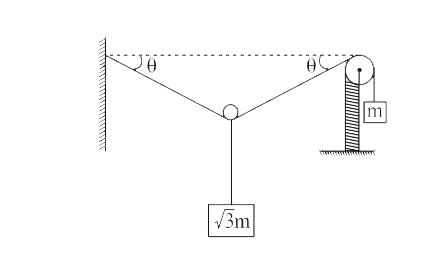A system is said to be in ...... equilibrium when the system and the surroundings are at the same temperature.
To answer the question, we need to identify the type of equilibrium described in the statement.
1. Understanding the Concept of Equilibrium:
- Equilibrium in thermodynamics refers to a state where there are no net changes occurring in a system. This can involve various types of equilibrium, such as thermal, mechanical, and chemical equilibrium.
2. Identifying the Type of Equilibrium:
- The question specifically mentions that the system and the surroundings are at the same temperature. This indicates that we are dealing with thermal conditions.
3. Defining Thermal Equilibrium:
- Thermal equilibrium occurs when two systems (or a system and its surroundings) are in contact and there is no net flow of heat between them. This means they are at the same temperature.
4. Relating to the Zeroth Law of Thermodynamics:
- The concept of thermal equilibrium is rooted in the Zeroth Law of Thermodynamics, which states that if two systems are each in thermal equilibrium with a third system, then they are in thermal equilibrium with each other.
5. Final Answer:
- Therefore, the blank in the statement can be filled with "thermal". A system is said to be in thermal equilibrium when the system and the surroundings are at the same temperature.
Final Answer:
A system is said to be in thermal equilibrium when the system and the surroundings are at the same temperature.
---
- Equilibrium in thermodynamics refers to a state where there are no net changes occurring in a system. This can involve various types of equilibrium, such as thermal, mechanical, and chemical equilibrium.
- The question specifically mentions that the system and the surroundings are at the same temperature. This indicates that we are dealing with thermal conditions.
- Thermal equilibrium occurs when two systems (or a system and its surroundings) are in contact and there is no net flow of heat between them. This means they are at the same temperature.
- The concept of thermal equilibrium is rooted in the Zeroth Law of Thermodynamics, which states that if two systems are each in thermal equilibrium with a third system, then they are in thermal equilibrium with each other.
- Therefore, the blank in the statement can be filled with "thermal". A system is said to be in thermal equilibrium when the system and the surroundings are at the same temperature.
A system is said to be in thermal equilibrium when the system and the surroundings are at the same temperature.
Topper's Solved these Questions
- CHEMICAL THERMODYNAMICS BOOK - ICSECHAPTER - CHEMICAL THERMODYNAMICS EXERCISE - ASSERTION -REASON TYPE QUESTIONS
9 Videos
- CHEMICAL THERMODYNAMICS BOOK - ICSECHAPTER - CHEMICAL THERMODYNAMICS EXERCISE - NUMBERICAL PROBLEMS
18 Videos
- CHEMICAL THERMODYNAMICS BOOK - ICSECHAPTER - CHEMICAL THERMODYNAMICS EXERCISE - TRUE OR FALSE. TYPE QUESTIONS
24 Videos
- CHEMICAL BONDING AND MOLECULAR STRUCTUREBOOK - ICSECHAPTER - CHEMICAL BONDING AND MOLECULAR STRUCTUREEXERCISE - NCERT TEXT-BOOK EXERCISES ( WITH HINTS AND SOLUTIONS)
47 Videos
- CLASSIFICATION OF ELEMENTS AND PERIODICITY IN PROPERTIESBOOK - ICSECHAPTER - CLASSIFICATION OF ELEMENTS AND PERIODICITY IN PROPERTIESEXERCISE - NCERT TEXT-BOOK. EXERCISE (With Hints and Solutions)
63 Videos
Similar Questions
Knowledge Check
A reaction is said to be in equilibrium when
A(a) the rate of transformation of reactants to products is equal to the rate of transformation of products to the reactantsB(b) 50% of the reactants are converted to productsC(c) the reaction is near completion and all the reactants are converted to productsD(d) the volume of reactants is just equal to the volume of the products.A rigid body is said to be in partial equilibrium, when it is in
Aa. translational equilibrium onlyBb. rotational equilibrium onlyCc. either (a) or (b)Dd. neither (a) nor (b)
(A) : If body or a system has neither translational nor rotational motion then it is in complete mechanical equilibrium.
(R ) : A body or system is said to be in mechanical equilibrium when net force and net torque acting on the body are zero.
View SolutionClosed system can exchage (with surroundings)
View SolutionFor equilibrium of the system, value of mass m should be

View SolutionA system X is neither in thermal equilibrium with Y nor with Z. The systems Y and Z
View SolutionThe system is in equilibrium. Find the angle θ

View SolutionIn………………..process, no heat is exchanged between the system and the surroundings.
View Solution
